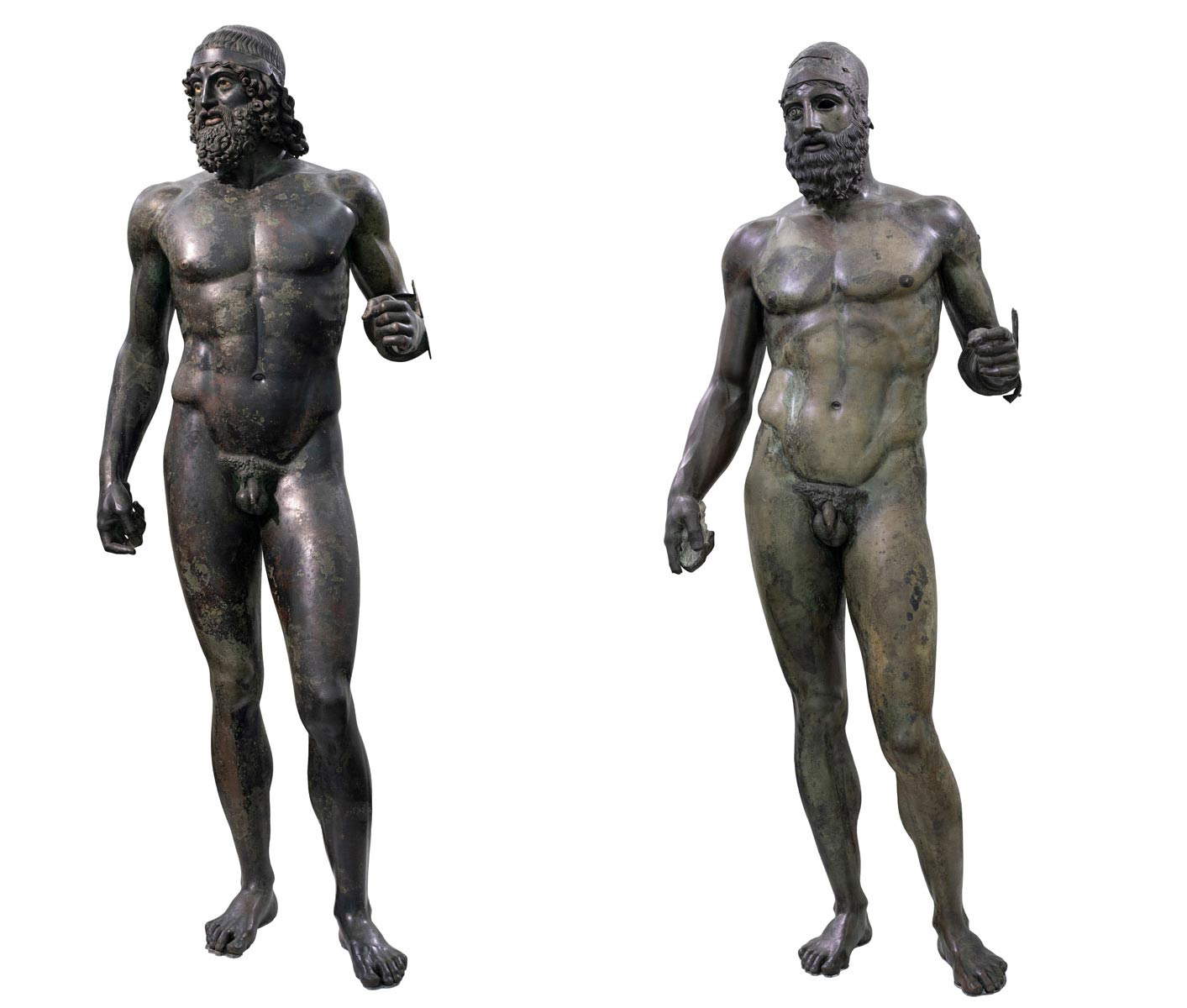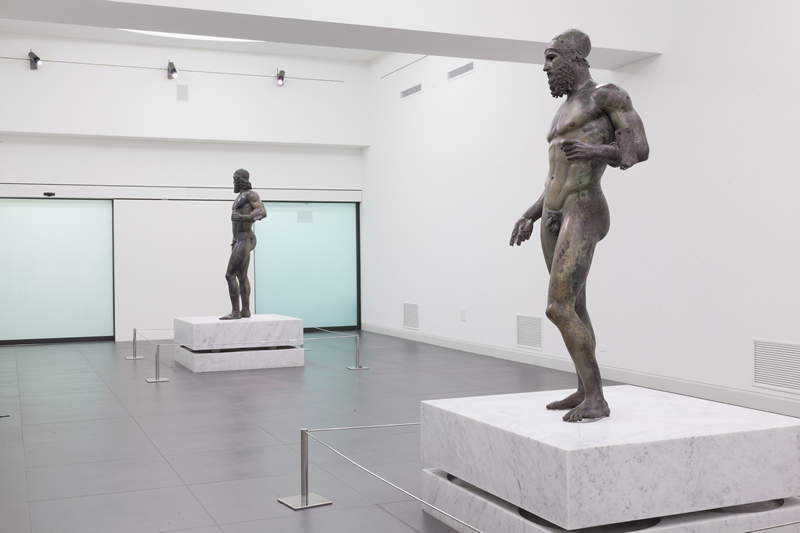On the 50th anniversary of the discovery of the Riace Bronzes, everything has been talked and written about, but too little about the “health” of the two warriors. Yet precisely the conservation aspects in the recent past have been the Achilles’ heel of the new course under the banner of managerial and financial autonomy of the National Archaeological Museum of Reggio Calabria. It made an uproar the news (rebutted by Ansa and relaunched by Gian Antonio Stella in the Corriere) that writes us had given in 2017 of the prolonged interruption in the functioning of the internal monitoring system, with which the works, among the very few in the world, are equipped since the last exhibition arrangement (2013).
This is no small matter, because it also fueled doubts about the Franceschini Commission, which expressed a negative opinion on the transportability of the Bronzes to the Milan Expo, but in the absence of precisely the data provided by this system. Recently, from the columns of the “Gazzetta del Sud,” Professor Roberto Ciabattoni, Restorer-Conservator of the Laboratory of Physics and Environmental Controls of the ICR (Central Institute for Restoration) in Rome and designer of the system, returned to remind us of its importance in the interview he gave to this writer.
In the last restoration in the laboratory-window of Palazzo Campanella (2009-2013) Ciabattoni was responsible for the scientific diagnostics and mechanical systems of protection of the two statues. “In the course of the intervention,” he recalled, “a scientific diagnostic campaign was carried out with the aim of verifying and comparing with the chemical and physical investigations previously carried out. At this stage, a ’single face’ gammagraphic campaign of the Bronzes’ surfaces was carried out for the first time. To understand this, when an X-ray is taken in medicine, the image returns the whole of the body passed through. In this case, however, by placing the beam-emitting probe inside the statue we obtained a more detailed image of a single layer of bronze. The result was exceptional: it was possible to see details and mechanical peculiarities that had not been studied before; in particular, to observe some details related to the affixing of wax on the model later employed for casting.”


Ciabattoni also pioneered and introduced a unique system that during the last restoration in 2009 allowed them to be safely moved from the museum to Palazzo Campanella. “The first ’integrated protection’ program,” the technician still recalls, "was the one developed on the Dancing Satyr of Mazara del Vallo, which I designed in 2002, then employed for the 2005 trip to Japan. At the 2005 Aichi Expo, the presence of the Dancing Satyr statue was requested, and ICR was commissioned to take care of the delicate handling and transport operations that led to the creation of the carbon (transport/support) system by which the statue was moved and displayed (a system currently in use). With the need that arose in 2009 to move and position the Bronzes horizontally, it was decided to replicate the same system that successfully allowed the safe handling and stationing of the two statues during all phases of the intervention. At present, the concept of the system developed 20 years ago is widely ’imitated’ and used on the most important handling of movable artifacts."
With thorny backstory, which has never been discussed. This system, exactly as it was for the Japanese transfer of the Satyr, in its original design could have allowed for “trips” far longer than that short journey within the city of Reggio Calabria. It was, instead, at the specific request that it would be modified to allow only those “four steps” into the city. A delicate issue, apt to always inflame tempers, the transportability or otherwise of the Bronzes would be interesting to be able to clarify once and for all: in light of technological advances that would date back, therefore, already more than a decade, is it possible or not to move them safely? Then, one can always make the case for the cultural appropriateness of such operations: it is one thing if the request is made for an exhibition with a high scientific profile, quite another for a fair or a G7.
On one thing, however, everyone agrees: no one would think of moving a sick person from his hospital bed without first knowing his real condition. Here, for the Bronzes, one could have that sophisticated control system that checks mechanical and microclimatic parameters, already the subject of scandal a few years ago. The conditional again becomes a must, because after it was finally restored in 2019, today we no longer know what data it is emitting, but also whether it is still working. “The sensors,” Ciabattoni goes on to explain, “are placed inside the statues: they record and provide in real time the data detected and allow for timely intervention when critical issues occur that may compromise proper display and conservation. The project was conceived and the system built in such a way as to allow remote verification (from the ICR headquarters in Rome, ed.) of the data and detect any anomalies and is able to recommend appropriate interventions.”





But even though he was the one who designed it and reactivated it in 2019, today he is no longer able to tell us what data he is providing. “At the present time,” he points out, “the system does not ’communicate,’ that is, it is not networked, and therefore it is not possible to ’query’ it from the ICR, so I am unable to answer you. I would like to point out that the exhibition system is composed of earthquake-resistant bases (ENEA project) and devices that constrain the statues on these bases, the latter consisting of steel rods and cables whose tension must be instrumentally verified with the monitoring system. In essence, the data it produces are essential for controlling the static balance of the Bronzes, as well as important for preventing the triggering of certain degradation processes.”
As in 2017, we tried to ask the director of the National Archaeological Museum of Reggio Calabria, Carmelo Malacrino, for clarification. To know also which technicians have replaced those ICR and for what reasons this collaboration between two Institutes of the Ministry has been interrupted. Too bad that again the director did not respond. Although in the motivation for the prestigious International Award “Satyrion for Archaeology,” which he received in Taranto last September 24, we read, “Carmelo Malacrino has been able to combine management with study, teaching and inclusion, conservation and enhancement, innovation, community and internationalization in an exemplary way [...].”
Between awards and visits of excellence to the museum , such as those of a few days ago by the members of the Commission for Regional Development (REGI) of the European Parliament or Prince Tree of Monaco, if we could go beyond the showcases to understand how things really are, it would be a good service to the practice of “conservation” risen to the figure of his office by Undersecretary Vittorio Sgarbi, always attentive to the Bronzes issue. May the time for clarity be the international conference, “The Riace Bronzes. 50 years of studies and research,” to be held any day now (10-11-12) precisely at the Archaeological Museum of Reggio and where, among others, in addition to Malacrino, Ciabattoni himself will make a speech?
Finding: August 16, 1972
Recovery: 21 August 1972
1st restoration (RC): from 1972 to 1975
2nd restoration (FI): 1975 to 1980
Florence Exposition: 1980 (15-12-1980 / 24-06-1981)
Rome Exposition: 1981 (29-06 / 12-07-1981)
Arrival in Rc: August 2, 1981 (official opening on 3-08)
Beginning of ICR’s diagnostic and conservation activities on the Riace Bronzes.
Internal study (endoscopy): 1986 - 1987
3rd Restoration: 1992 to 1995
Acquisition of the forms (laser scanning): 2007
4th Restoration: 2009 to 2013
50th anniversary of the discovery: August 16, 2022
Warning: the translation into English of the original Italian article was created using automatic tools. We undertake to review all articles, but we do not guarantee the total absence of inaccuracies in the translation due to the program. You can find the original by clicking on the ITA button. If you find any mistake,please contact us.